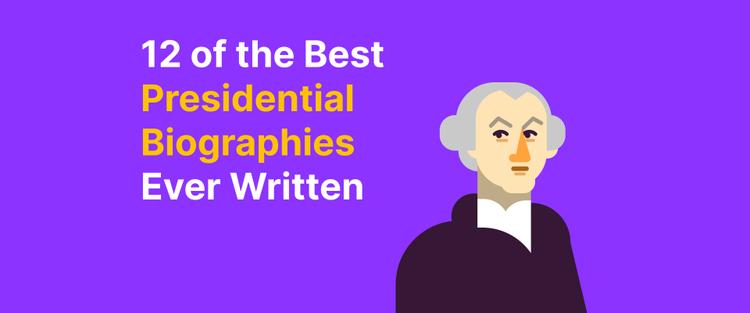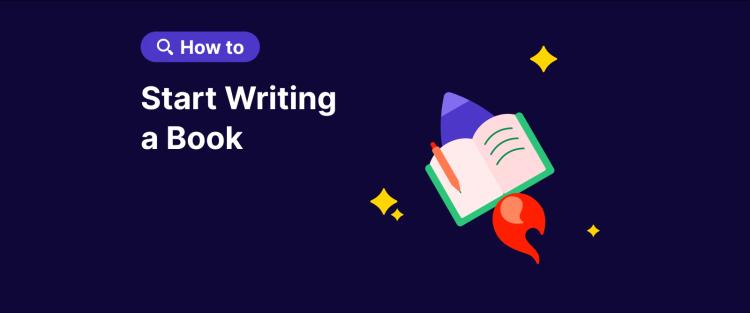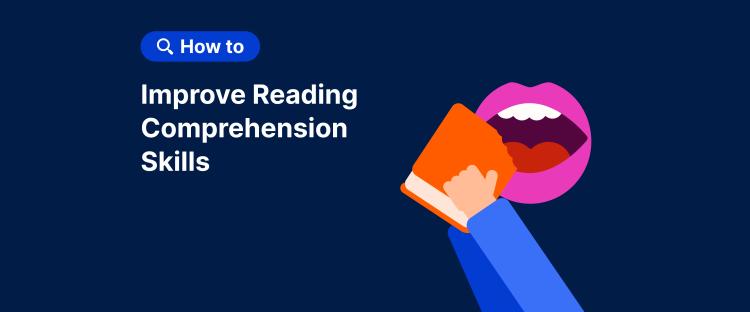Thinking about writing your first book but don’t know where to start? Whether you aim to share your expertise, build your brand, or simply get published, this guide covers everything you need — from developing your idea and building a writing routine to getting a publishing deal and promoting your book.
I'm Jordi Reche, author of ‘Convence sin abrir la boca’ — a bestseller published by Penguin Random House.
In this guide, I’ll show you everything I learned through the process and teach you how to find a book idea, plan your book, structure your chapters, stay motivated, and publish your work with confidence, step by step.
Before you dive in, check out Headway. It's got 2,000+ book summaries on writing, creativity, and building your author brand — all in 15-minute reads. Learn from successful authors while you're working on your own book.
📘 Download Headway and see how the pros do it!
What you’ll learn in this article:
Finding the right motivation to write a book in the first place
How to structure and outline your non-fiction book
How to create a writing routine
Traditional publishing vs. self-publishing
Book marketing strategies
FAQs: Common first-time author questions
How I became a published writer: Where it all began
In November 2021, I received an email that would lead me to do one of the things I’m most proud of in my life — both professionally and personally. Penguin Random House, one of the largest publishing houses in the world, offered me the opportunity to start writing my first book: ‘Convence sin abrir la boca.’
Like many people, I had dreamed of writing a book, but when the moment arrived, I felt completely lost and unsure of where to begin. Fortunately, I had the support of my editor, Alba, and the incredible Penguin team, who helped guide me through the process.
What began with uncertainty became a book that has gone through six editions and consistently topped the bestseller list in its field. ‘Convence sin abrir la boca’ (‘Convince With Your Mouth Closed’) has become a reference in the world of non-verbal communication and unconscious behavior.
I wrote this article to help you begin your adventure of writing a book — especially if, like me, you’ve never been formally trained and don’t know where to start.
“Draw the art you want to see, start the business you want to run, play the music you want to hear, write the books you want to read, build the products you want to use – do the work you want to see done.”
― Austin Kleon, ‘Steal Like an Artist: 10 Things Nobody Told You About Being Creative’
Finding the right motivation to write a book
For me, the first question anyone who wants to write a book should ask themselves is why they want to write it.
What is your motivation?
What are your objectives?
There are two types of motivation: intrinsic and extrinsic.
Intrinsic motivation comes from within, while extrinsic motivation comes from outside. Of course, the one that guarantees a better chance of success is the first one, as it only depends on you.
In my opinion, you should write a book because you feel a personal desire to do so. In my case, my writing goal was to capture everything I shared over the years in my courses and training sessions. In effect, it was a way to preserve the essence of what I teach, and that was my objective.
It had to be a serious, professional book and a manual to help improve the communication of those who read it. From there, I started working.
However, I’m sure that if my motivation had been extrinsic, it wouldn’t have worked as well. If I had written a book to sell a lot, to become more well-known, or to feed my ego, the result wouldn’t have been the same.
How to structure and outline your non-fiction book
Here is the most important point. What are you going to talk about? What topics will be covered in your nonfiction book? The method that worked best for me was to lay out step-by-step all the topics, subtopics, examples, and case studies that I use daily in my courses, talks, workshops, and social media posts.
I wanted to make absolutely sure that I wasn’t leaving anything important out. To do this, I started writing EVERYTHING on a large piece of paper. The next step was organizing everything into chapters or sections.
This way, I had a very clear and visual image of how my book was taking shape. I could also see what was most important and less critical so I could allocate the appropriate space to each section.

Of course, this changes and evolves throughout the creative writing process. Think of it as your reference, but it is also flexible.
To give you a better sense of what this process might look like, here’s a fictional example of how someone could structure a nonfiction book on communication. This isn’t the actual outline of my book, but it’s inspired by the type of framework I developed during the planning stage:
Chapter 1: Why Non-Verbal Communication Matters
A personal story from a training session
What people misunderstand about body language
Why mastering non-verbal cues changes everything
Chapter 2: The Fundamentals of Body Language
Types of non-verbal signals
Cultural differences and context
Scientific insights and misconceptions
Chapter 3: Reading the Room
How to interpret body language in real-time
Practical exercises for sharpening your awareness
Common signals and what they usually mean
Chapter 4: Non-Verbal Tools for Public Speaking
Managing presence on stage or in meetings
Eye contact, gestures, and movement
Avoiding distracting habits
Chapter 5: Everyday Applications
Communication in work, relationships, and interviews
Becoming more intentional in daily interactions
Recognizing body language in yourself
Conclusion: Becoming a Conscious Communicator
Reflecting on progress
How to keep practicing and growing
Final encouragement
This is simply an example, but it shows how helpful it can be to visually map out your ideas and then organize them in a way that flows naturally.
It’s also a great exercise to observe how other published authors have written similar books, including how they present and organize their content and chapters. No one is born knowing how to write a good book, so learning from bestselling authors who have already done it is a very good option.
On the other hand, you may find yourself in a situation where you don’t have the necessary resources, ideas, or materials to start book writing. In other words, you might have the main idea or ideas but don't know how to begin working on them.
In this case, I recommend you learn as much as possible about how this topic has been addressed in different media, including books, magazines, websites, and social media platforms. This way, you’ll have a clearer idea to inspire you and start brainstorming ideas.
Moreover, you might need to learn and gather more information on the subject until you gain the confidence to begin your work. Without this confidence, it’s very difficult to start writing, and most likely, the process will become frustrating.
Building a writing routine (and sticking to it)
For me, the number one requirement when writing a book is to have a plan. To be organized, identify a method and know what deadlines you want to set. In my case, the process of writing a book took a year.
I spent the first two months on the previous point — organizing, compiling, and focusing on everything I would talk about. I must say that throughout that year, I never fully dedicated myself to writing the book itself except for specific moments. I never stopped my regular pace of life.
I started writing the first sentences of my book in the third month of that year and finished by the eighth month. The following three months were dedicated to revising and finalizing the text.
Your experience might be different, yet there is one thing you need to be very sure about: the timeline you aim to stick to. It’s extremely easy to get delayed, slow down, or get distracted. To avoid that, I organized myself by weeks. Once I learned how quickly I wrote, I knew roughly how much time I should spend on each chapter.
All of this helped me establish a sustainable work routine, and I wrote between two and three hours every day.
📘 Get Headway for quick insights on writing, creativity, and building your author platform.
“Progress, not perfection, is what we should be asking of ourselves.”
― Julia Cameron, ‘The Artist's Way: A Spiritual Path to Higher Creativity’
Research tips for non-fiction writers
I’ve always believed that writing a book is an important task. It’s a responsibility, something that transcends you. And because of that, I used every necessary mechanism to ensure everything I wrote was accurate and true.
I researched as much as possible about all the studies I referred to, as I didn’t want to cite any that weren’t valid or didn’t even exist.
As any good writer, I also made 100% sure that my bibliography was correct and that all the sources I cited were of high quality.
Whether you opt for the Internet or books, everything is valid as long as you cross-check the information and filter your sources. Unfortunately, not everyone does this.
If you want to level up your reading game as a writer, check out these articles: How to Read More Books, How to Read a Book, and How Many Books to Read a Year. They'll help you build the reading habits that every successful author needs.
Managing time, deadlines, and staying consistent
Creating a writing schedule is probably the hardest part of writing a book. Everyone has written things countless times, but not everyone has written a book. You need a routine, writing habits, and discipline to do so.
It’s very important to have an effective work plan, but one that you can also sustain and integrate into your lifestyle.
Remember to set achievable goals for yourself; for example, it makes no sense to try to write eight hours a day if you already have a full-time job. Instead, identify which hours of the day are best for your writing sessions.
If you can’t write during those hours, try doing it on weekends. If you have to do it, for example, after work, try to maintain a lifestyle and habits that allow you to stay fresh and energized during those hours.
In my case, the best way I found to fit writing time into my daily routine was by doing it for an average of three hours each night after dinner, roughly from nine to twelve.
To make this work, I had to ensure I was rested and not tired by that time of the day. I adjusted my sleep and even eating routines to achieve this.
Soon enough, I realized I could keep up this pace for about three to four days during the week and one day on the weekend. Then, I calculated how much time I would need to finish my book.
Overcoming procrastination and writer’s block
I believe it’s very important that you create a writing routine that is reasonably demanding but one you can maintain. It should also be flexible: there will be days when you feel completely unable to write a single word. That’s perfectly fine.
Take that day off and come back stronger the next day. Or the next. But don’t delay your return too much because the longer you wait, the harder it will be to get back into it.
In my experience, forcing myself to write when neither the ideas nor the words were flowing didn’t work at all. And, even if I managed to write despite my writer’s block, it wasn’t good writing.
To get to the starting point of actual writing, you’ll first have to do the hardest thing: start writing your first chapter. Don’t try to make every text memorable from the start. Instead, start writing to develop the habit, and then you can learn about yourself and see how you write.
You’ll have all the time in the world to revise your texts and make any changes necessary, but make sure you start, and the sooner, the better. After all, the best way to face a blank page is to fill it with text.

For me, it was very important to send what I had written to someone I trusted as soon as possible so I could get an external opinion. You can do it with one person or several, but I found it really useful because it’s a way not to feel so alone and to feel like there are people accompanying you in what, in theory, is such an individual process.
There will be moments of procrastination, and you’ll feel like you can’t continue. Stop. Take your time, distract yourself, and return that day or the next, but again, don’t delay too long.
Tools, style, and maintaining your authentic voice
As for how to write, I had no doubt that I would use my laptop because I could write from anywhere. Also, it’s crucial to work with a cloud-based file. So that, whether your writing space is at home or a coffee shop, you can continue no matter what.
Many writers use tools like Google Docs, Dropbox Paper, or Notion to make sure they can access their manuscript across devices.
It’s also very important to have a notebook (or a note-taking app or other writing tool) at hand to write down any ideas you may come up with when you’re not at your laptop. Because when you’re writing, the process constantly runs in your brain.
At any moment of the day, a great idea might come to you, and you will hate yourself if you forget it because you didn’t write it down.
Some people carry a small paper notebook, while others prefer using apps like Evernote, Apple Notes, or even voice memos to quickly capture thoughts on the go.
Finally, it’s important to talk about your writing style. Here are my writing tips: You can make it more or less formal. Fresher and more direct, or not. The decision will depend on the tone you want to give to the book. But above all, it’s important to always keep one thing in mind: your authenticity.
If you opt for several styles or ways of writing, the book may end up feeling soulless. But if you stay true to your authenticity, it will preserve the book's credibility. Write a book that people can recognize as yours, one that anyone who knows you will instantly realize belongs to you.
For example, if you naturally speak in a conversational tone, it’s okay to write that way. If your style leans more analytical or reflective, embrace that too. What matters most is that it feels consistent and true to your voice.
When to stop editing and finalize your draft
This moment seems like it will never come, but it does, and even then, you probably won’t be fully convinced. You’ll always feel like you could make some changes or improvements to almost any part of your book.
However, you must set a point at which you consider your first draft complete. It’s the only way to stop writing and move your rough draft to the next step: the editing process.
If you self-publish, you’ll have to rely on yourself and, if possible, people who want or can help you. If you’ve written your book with a publishing house like me, you’ll notice that “the team,” including the proofreader and professional editor, starts to get fully involved.
Traditional publishing vs. self-publishing: What you need to know
There are two ways to publish a book: self-publishing or traditional publishing. Of course, each has its pros and cons.
When you self-publish, you have full control over the entire process, from self-editing to cover design and distribution. You also keep a higher profit margin from your published books.
However, there are downsides — you take on all the risk and don’t have the publishing, distribution, and commercial muscle of a traditional publishing house to support your whole book journey.
When you publish with a publishing house, your profit margin is, of course, reduced. But in return, you get to reach and visibility, which would be very hard to achieve on your own.
In my case, being published by Penguin Random House—a global leader in publishing—was a huge advantage. Their support opened doors and gave the book instant credibility that would have taken me years to build independently.
Here’s a simple breakdown of both approaches:
Self-publishing:
✅ Full creative control
✅ Higher royalty rates
✅ Faster time to market
❌ No editorial or marketing support unless outsourced
❌ Responsible for all promotion and sales
❌ Harder to gain visibility without an existing audience
Traditional publishing:
✅ Professional editing, design, and production
✅ Wide distribution and bookstore placement
✅ Built-in industry credibility
❌ Lower profit margins per book
❌ Longer timeline to get published
❌ Requires approval from agents or publishers
To publish with a publishing house, you first need to get their attention — you need to make them choose you. You can do this in two ways: by submitting your manuscript through a literary agent or by becoming someone well-known enough to attract their attention and who also has a minimum guaranteed number of potential buyers.
I achieved this by creating social media content and building a community.
I had a very positive experience with my publisher. That said, both parties must engage in an exercise of mutual trust. They trust you to write the entire book, and you must trust them to advise, correct, or modify some of your ideas.
I fully entrusted them with the process because I understood it was the best thing I could do. And the result was great. However, I always had the confidence to express my opinion if I didn’t like any proposed changes or modifications, and my opinion was always taken into account. After all, you’re working as a team.
This last point is the reason I have no doubts about repeating the process with a potential new book: I prefer to do it as a team rather than alone. And, of course, I try to do it with the best team possible.
Marketing and promoting your book
There’s a belief that writing a book is just the beginning. After writing it comes the hardest part: telling the world that your book exists. According to UNESCO, 2.2 million books are published worldwide each year, both physical and digital. Imagine how difficult it is to make your book stand out.

That’s why it’s crucial to have an action plan. In my case, it consisted of:
Constantly promoting my book through my social media.
Rewarding those who bought my book in advance. I held an online workshop with everyone who bought my book before it was published.
Giving away copies to people who could read them and spread the word.
Offering my clients the option to buy my book for their team when I give a conference or course.
Even after time passed, I continued promoting and talking about the book on my professional and personal social media platforms.
Your writing journey starts here: Stay inspired with Headway!
To sum up, writing a book is one of the most exciting journeys you can take in life. That’s why preparation is so important— it can even make the process more enjoyable! Try the Headway app to stay inspired and learn from the world’s best non-fiction books in a quick and accessible way.
With bite-sized summaries and key insights, Headway helps you develop your writing skills, spark new ideas, and stay motivated every step of the way.
📘 Download Headway and learn from bestselling authors while writing your own book.
FAQs about how to write a book
How can I make my non-fiction book more engaging?
Writing non-fiction is not the same as writing fiction, but that doesn’t mean it has to be dry. A strong voice, a clear message, and a fresh perspective make all the difference. Avoid clichés; your book should feel original, not like something readers have seen a hundred times before. And storytelling matters because even in non-fiction, having a main character — whether it’s you, an expert, or someone from history — can help keep readers engaged.
Is self-publishing on Amazon a good option?
When it comes to publishing, there are several options. Self-publishing on Amazon gives you control, but it’s also hard work. You’re responsible for everything, including the book cover, marketing, and edits. Get it right, and you can make an impact. Get it wrong, and your book might get lost in the noise. And then there’s length. Your word count matters.
How can I become a better non-fiction writer?
Want to improve? Start listening to podcasts and read book summaries on the Headway app about writing and publishing. Learn what works and what doesn’t. If you’ve written a short story or dabbled in science fiction, use those storytelling skills to make your non-fiction book more compelling. Even Stephen King says that good writing is about clarity, cutting the excess, and staying true to your voice.
Is writing a book hard?
Yes — but in the best way possible. Writing a book isn’t just about putting words on a page; it’s about committing to a long-term creative process. For me, the hardest part was managing time, staying consistent, and navigating the self-doubt that naturally arises when you're trying to produce something meaningful. I didn’t dedicate myself to writing full-time — I worked around my existing commitments, writing between 9 p.m. and midnight several days a week. There were moments of procrastination, frustration, and writer’s block.
How to become an author?
You don’t need a degree in literature or years of writing experience to become an author — I didn’t have either when I started. What you do need is a clear reason to write, a structure that supports your message, and a sustainable routine. In my case, the opportunity came from Penguin Random House, but the preparation came from years of sharing knowledge in my workshops and courses. I already had the ideas — I just needed to organize them into a cohesive book.
Do writers write all day?
Definitely not — at least, I didn’t. I had a full schedule and couldn’t afford to spend all day writing. Instead, I carved out focused writing sessions at night, usually from 9 p.m. to midnight, a few times a week. That might not sound like much, but with consistency and structure, it was enough. Most writers don’t live in a cabin with nothing to do but write — they juggle jobs, families, and responsibilities.
What genre of books sell the most?
In general, genres like romance, thrillers, and personal development tend to perform well — but that’s only part of the picture. What truly sells is a book that solves a real problem or answers a real question. My book, ‘Convence sin abrir la boca’, is about non-verbal communication — a niche topic, yet it became a bestseller in its field because it addressed something many people struggle with: how to communicate more effectively without speaking.










